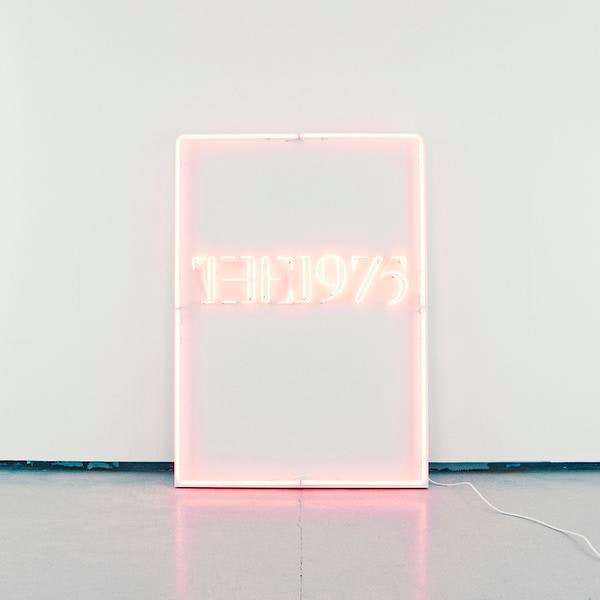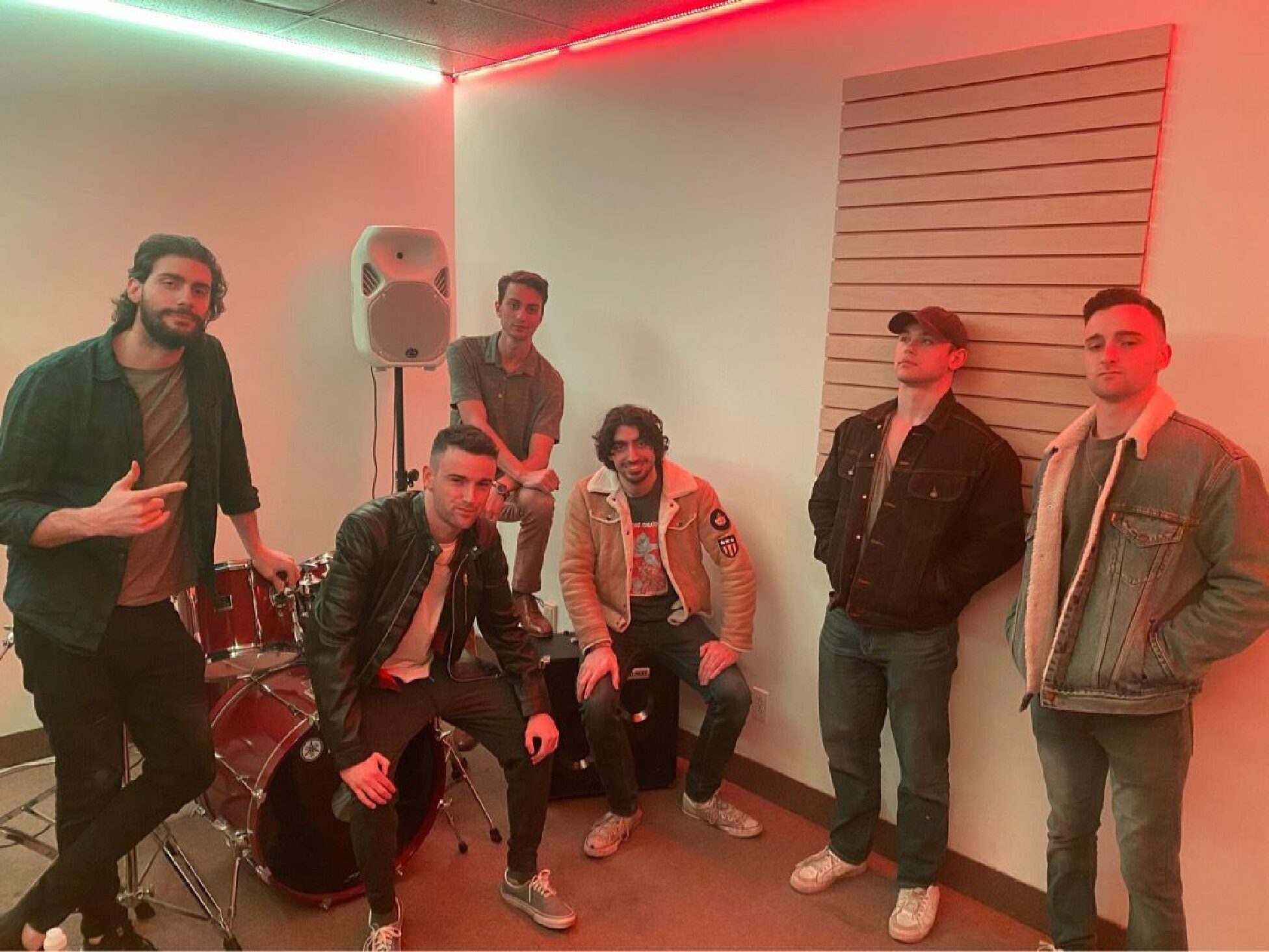Now’s a better time than ever to listen to I like it when you sleep, for you are so beautiful yet so unaware of it.
What now feels like eons ago has only been about five years. The 1975’s 2016 album, I like it when you sleep, for you are so beautiful yet so unaware of it, came three years after their self-titled debut, The 1975. The 17-track sophomore release has come to be a springboard for the music that the band would produce in the years following.
The interim period between their debut and their catapult to fame was defined by a social media blackout that fueled rumors of a potential split of the band. Following this, neon signs began appearing in a variety of different locations, each one displaying a song title from the album. Their placement was meant to reflect the meaning of the songs. Signs popped up in a variety of places such as New York, London and Los Angeles. Whether it was outside a grocery store, an emergency room or even in a church, all of the places were reflected and referenced within the respective tracks. With the help of photographer David Drake, photos of these signs came to be promotional icons for the aesthetic of the album.
It has now become tradition for The 1975 to open all of their albums with a version of the eponymous track, “The 1975.” With the second installment of this now-tradition for the band’s albums, I like it when you sleep’s version is more dependent on choir vocals and heavy synth. Nonetheless, its meaning as a track still remained a masqueraded tale of oral sex, “Go down / Soft sound / Step into your skin? / I’d rather jump in your bones / Taking up your mouth, so you breathe through your nose.”
It is just like any band to question the direction that they hope to take musically and lyrically as their careers are being forged. From their first LP to this one, there is a remarkable change in the sound of their music. At first, The 1975 was mostly a guitar-heavy, Brit-pop, emo band. This esoteric style of music is still appreciated by avid fans, but casual listeners only began to flock once their sound did a 180 and morphed into the synth-pop, production-heavy, I like it when you sleep. Even with a great change in style, band members and friends George Daniel, Ross MacDonald, Adam Hann and Matty Healy have stayed the course.
The first half of the tracklist opens with staples, “Love Me,” “A Change Of Heart” and “She’s American.” In an interview with Pitchfork, band frontman Matty Healy summarizes I like it when you sleep as “ego, fear and light.” These three tracks are exemplary for this description by Healy. “Love Me” comes off as a very musically striking track with heady guitar riffs and solos, when lyrically it is a tirade about the way fame has brought temptations into his life and fluffed up his ego following the band’s successes. In its own right, the song is self-referential, with its lyrics about fans loving the band and him trying to “Be the man that gets them up on their feet.”
“A Change Of Heart” follows the story of a falling out between two lovers. While this kind of song is cheap in music, Healy used this particular track to criticize people on the internet with, “And then you took a picture of your salad / And put it on the Internet.” The project’s fifth track, “She’s American” sees a musical output almost reminiscent of ‘80s pop songs with its prominent drumming pattern in the mix and upbeat production effects.
Lyrically, Healy is digressing on his status as a British man living in the United States, as the band lived in California when recording the album. His juxtaposition with the cultural differences between American and British women sees a variety of lyrics highlighting these differences such as “If she says I’ve got to fix my teeth / Then she’s so American.”
I like it when you sleep’s shining moment comes in the form of the project’s 10th track, “Somebody Else.” Like every other band, there needs to be a song that catches you and reels you in to check out their other songs, and “Somebody Else” is exactly that. “Somebody Else” is not just a bedroom pop jam for heartbroken teenage girls, it is a staple for the music that The 1975 makes.
Throughout the middle ground of the album, there are a handful of tracks that attempt to engage listeners that are frankly a bit long and experimental in contrast to the album’s more popular songs. While tracks like “Please Be Naked,” “Lostmyhead,” and the title track can appeal to devoted fans, a casual listener may find little to enjoy with minimal or no audible words across these tracks.
While not for everyone, fans of production and mixing could certainly appreciate the mastery possessed by band drummer and often producer, George Daniel. Nonetheless, as Healy mentioned in Spotify’s storyline feature, ambient music is his favourite art form and he likes to “think of ambient music as the engine of The 1975.”
As the album draws to its end the tracklist ends on the melancholic trio of “Paris,” “Nana” and “She Lays Down.” The first of the trio is one of the album’s more critical songs, where Healy describes a foul girl whom he meets who is coked up to the nines (“She’s a pain in the nose”). While the lyrics are a bit sporadic in this song, Healy is again able to point the finger back at himself as opposed to solely criticising someone else. Healy, who once was addicted to heroin and other opiates, does a variety of self reference in this song with lyrics like “As the crowd cheered for an overdose,” and “She said I’ve been romanticizing heroin.”
The penultimate track, “Nana,” is a wearily somber acoustic track that sees Healy retelling the tale of his grandmother’s death and how he is reeling from it. His poignant lyricism builds on earlier themes of religion, while diving headfirst into mourning. “And I know that God doesn’t exist / And all the palaver surrounding it / But I like to think you hear me sometimes.”
As the lengthy I like it when you sleep draws to a close, Healy caps off the album with a fingerpicking acoustic guitar track, “She Lays Down.” While this track is bereft of any heavy production or woozy synth notes, the lyrics make up for the song’s overall simplicity by being a very personal memo referencing Healy’s relationship to his mother and her postnatal depression “—And in the end, she chose cocaine / But it couldn’t fix her brain.”
In hindsight, everything always looks clear. I like it when you sleep was a standalone masterpiece at the time, but looking back on it to this day, there is a linear progression throughout The 1975’s albums. As Healy mentioned on Spotify’s album storyline feature, this album was the springboard upon which he dove into the band’s next two albums, saying, “I often see ILIWYS as the creche for the ideas that came next.”
All of this to say, I like it when you sleep will likely be to The 1975 what The Dark Side of the Moon is to Pink Floyd, an album that will be remembered for decades down the road. Though vastly different, both of these albums possess similar qualities that see them lyrically covering a variety of topics, backed by memorable musical displays. With this album being their breakout, the band later ensued with what is arguably their opus, A Brief Inquiry Into Online Relationships. With the sound having gone through an evolution, there is a traceable pattern of growth in sound, lyricism and delivery with the progression of music from The 1975.




